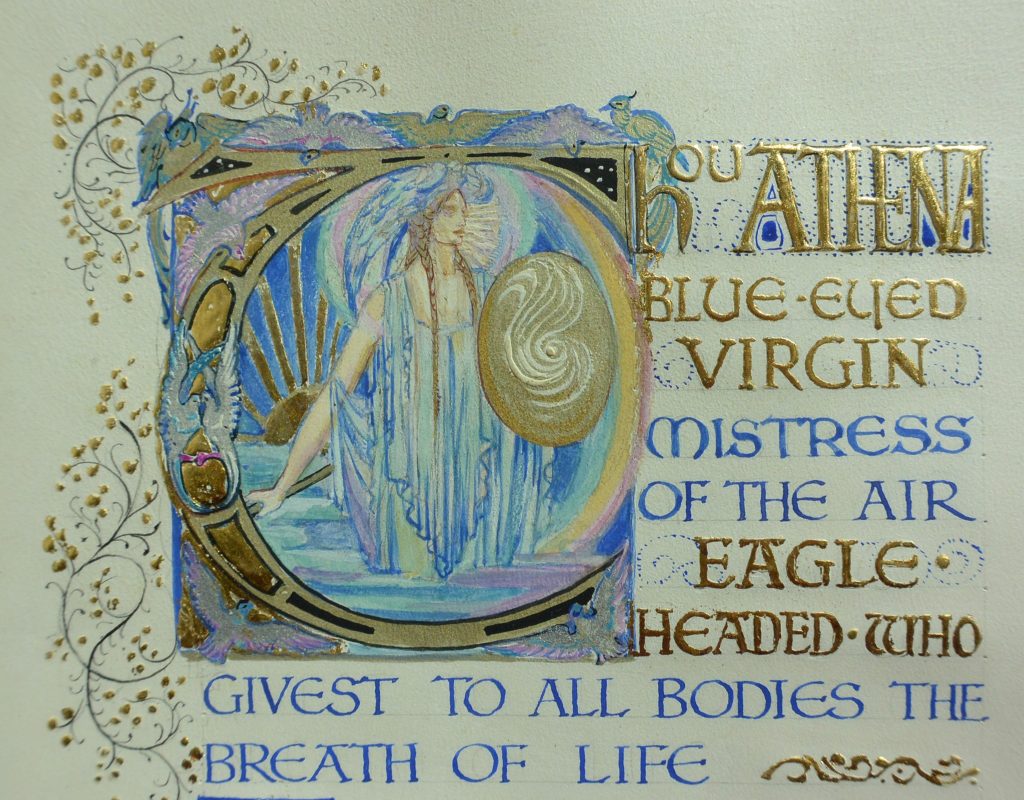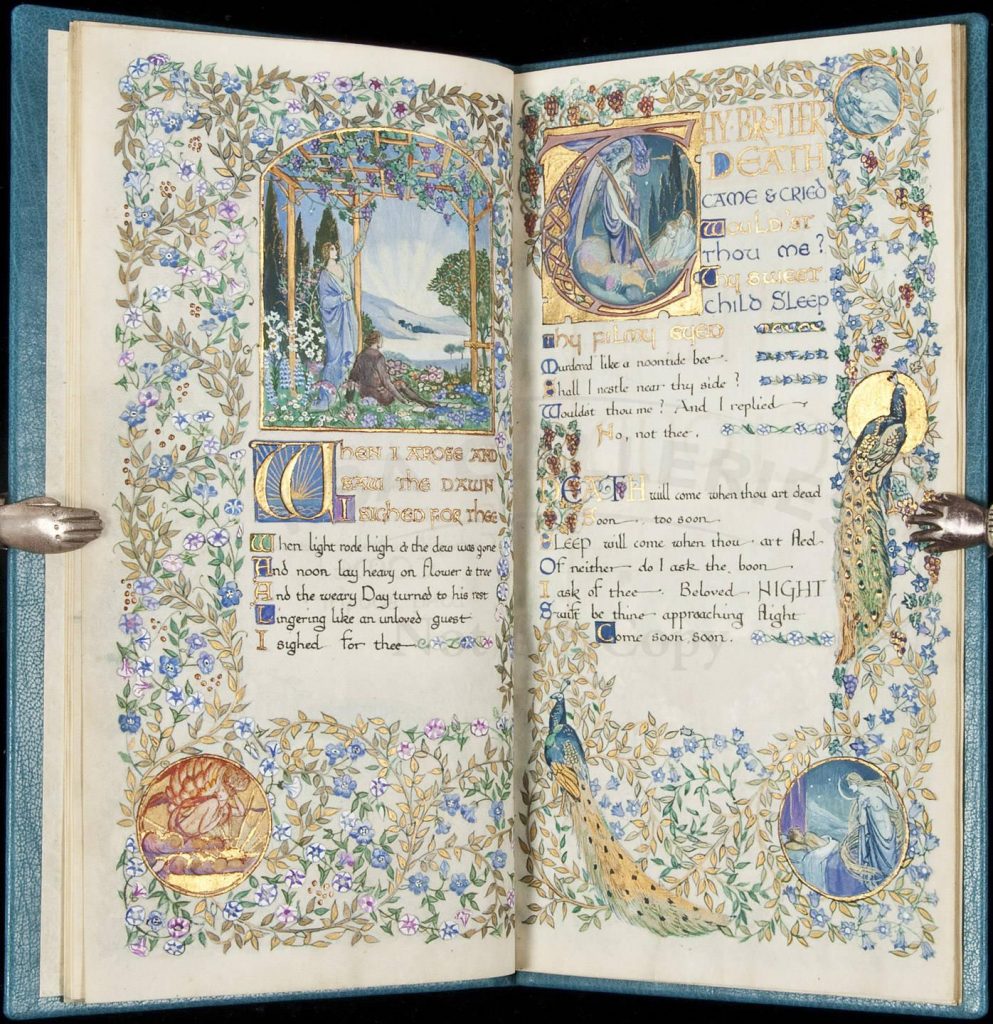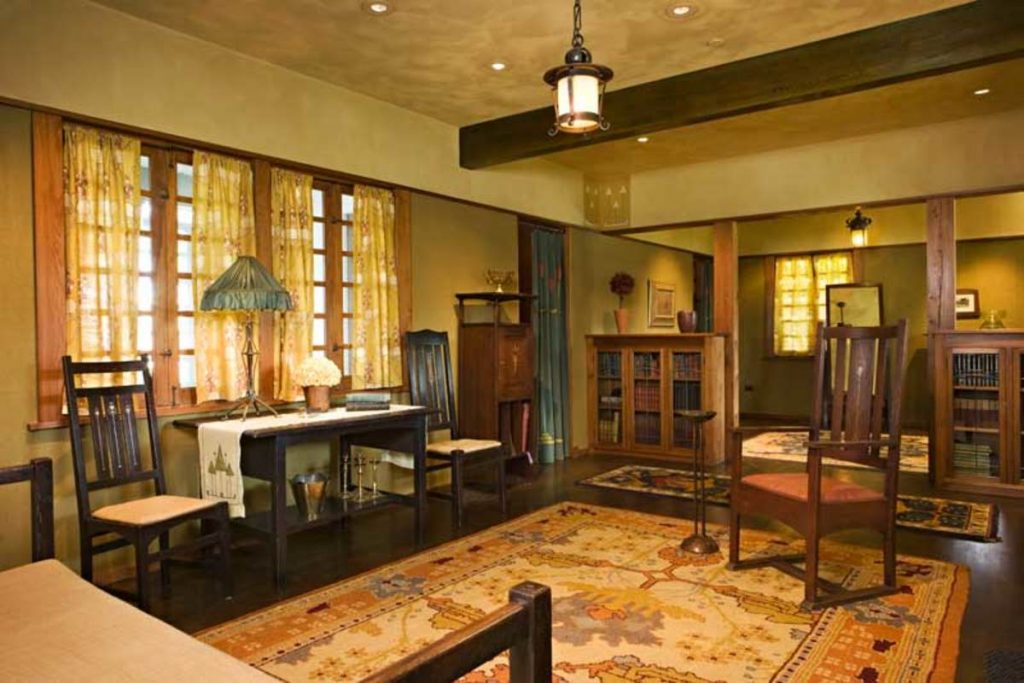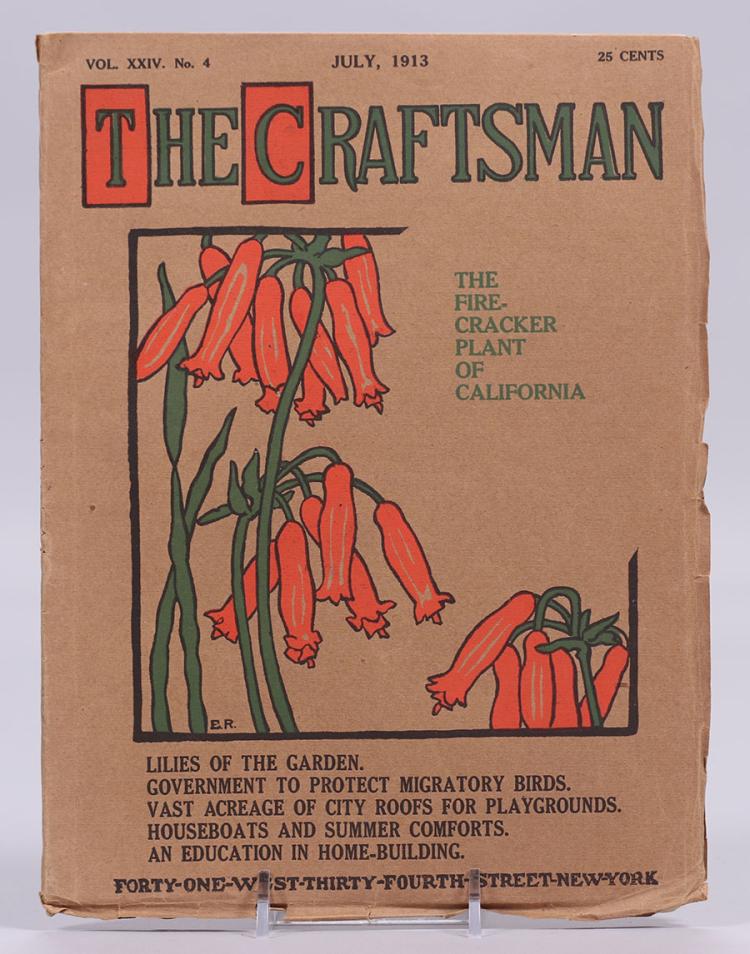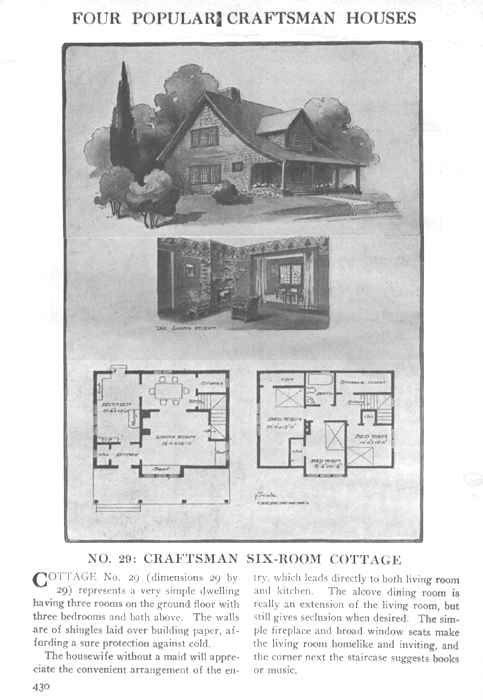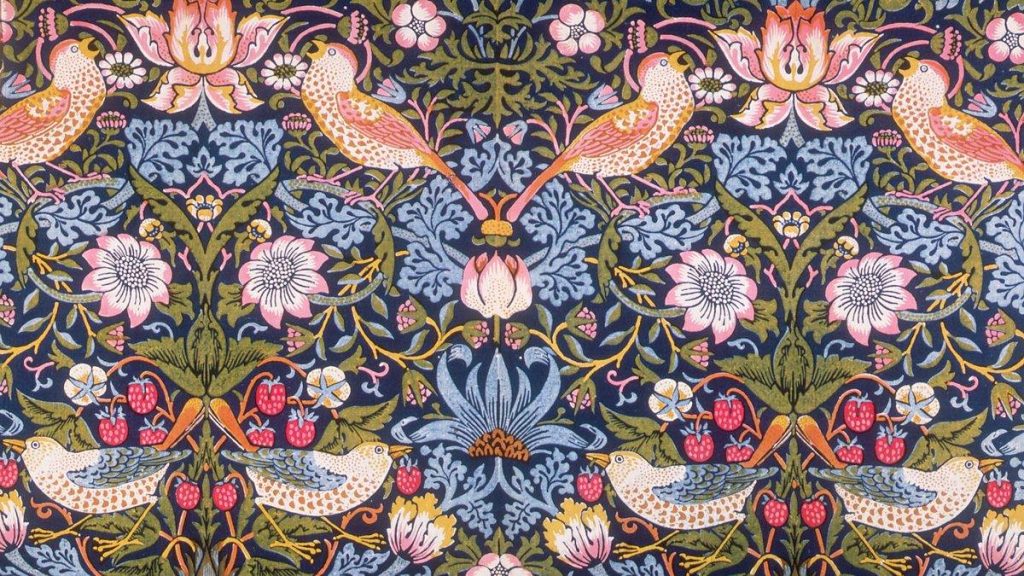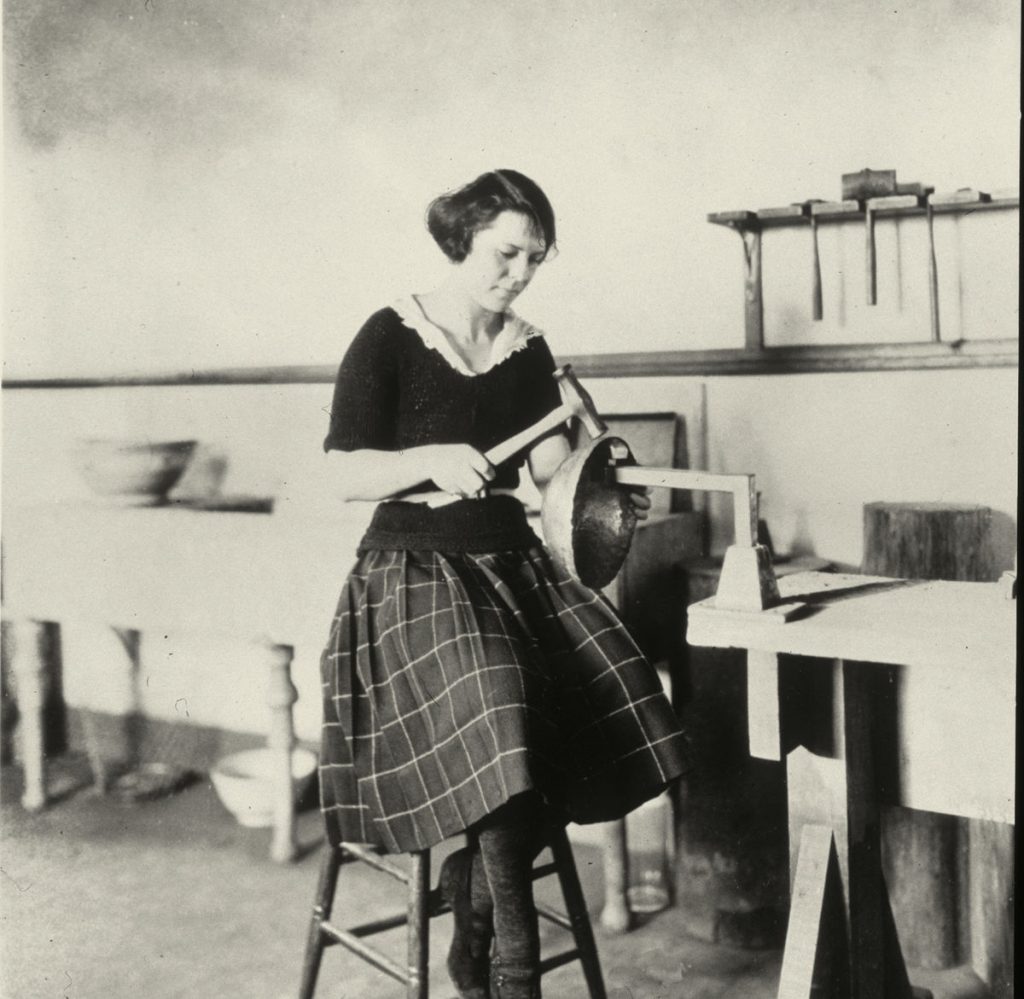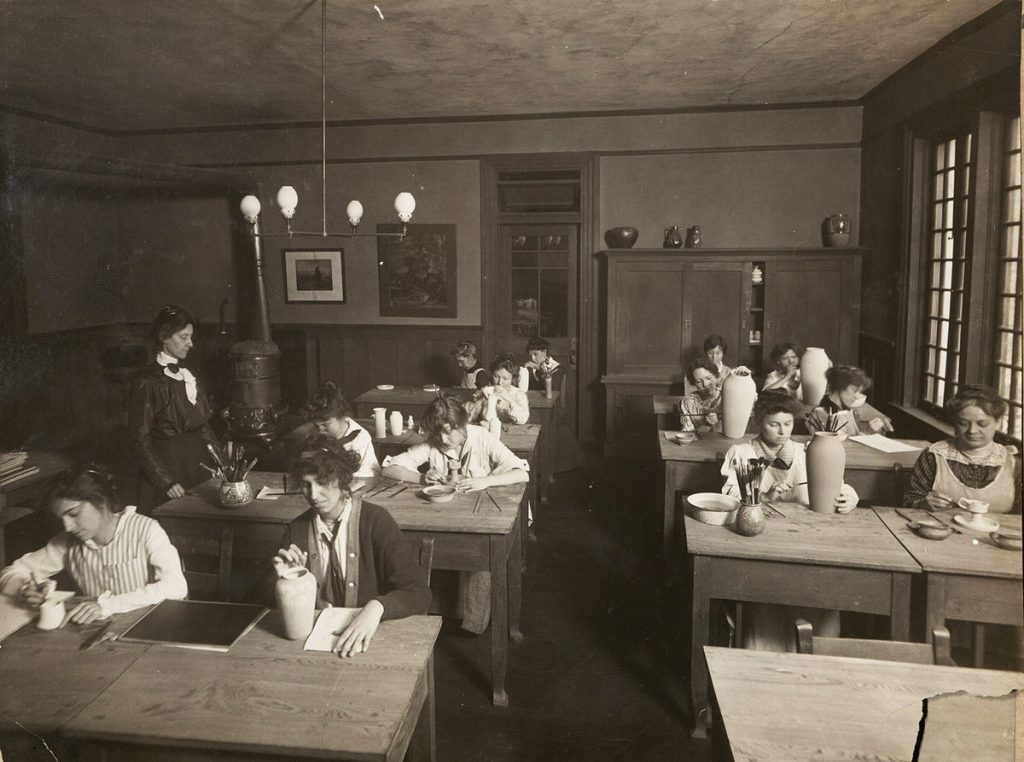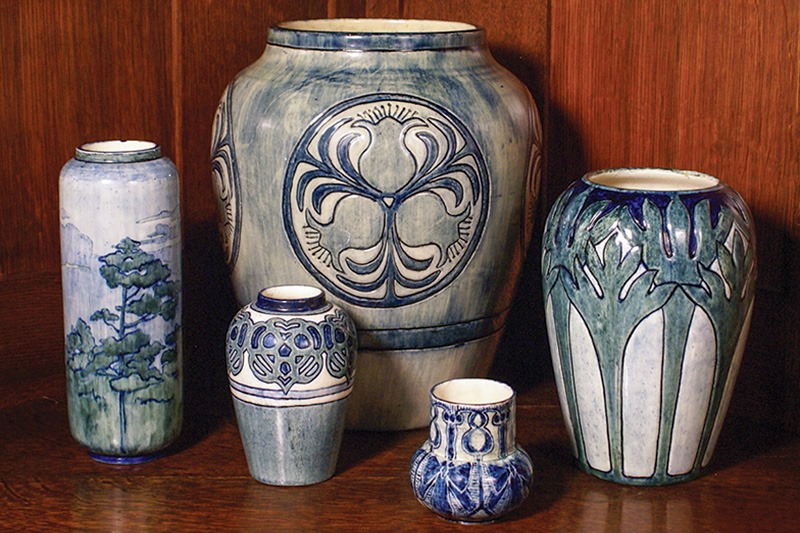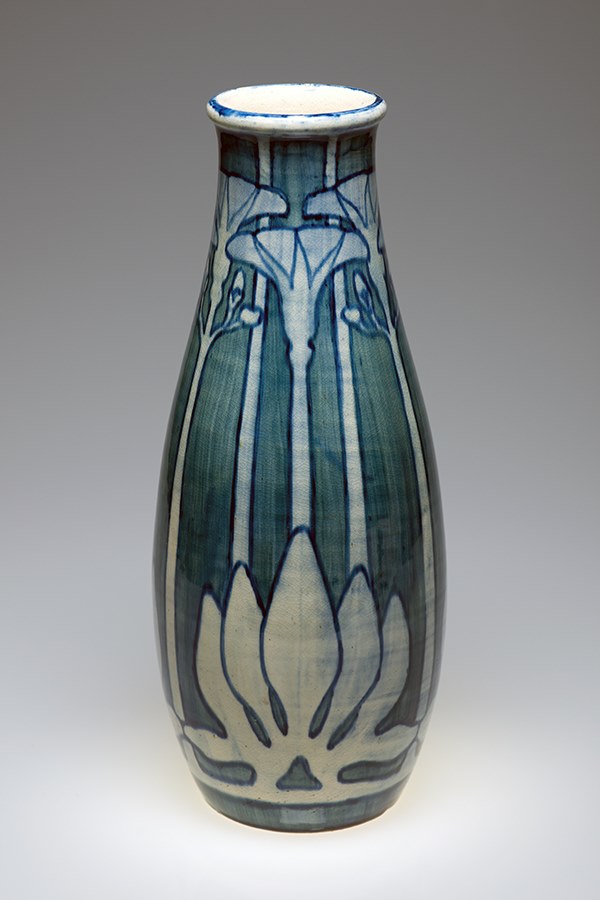The Dubuque Museum of Art can be found on the following social media platforms:
Craft Social Media Post 12 August 2020
DuMA 2nd Craft Invitational Featured Artist:
Gordon Browning
Gordon Browning is a wood artist working in Viola, Wisconsin.
Browning makes lathe-turned, blind-hollowed vessels. Aesthetically, he favors clean, full-bodied curves that respect the grain and hint at the log beneath.
For more info about Miller including bio & artist statement: https://dbqart.org/craft2020//browning/
DuMA 2nd Craft Invitational continues through October, 11, 2020
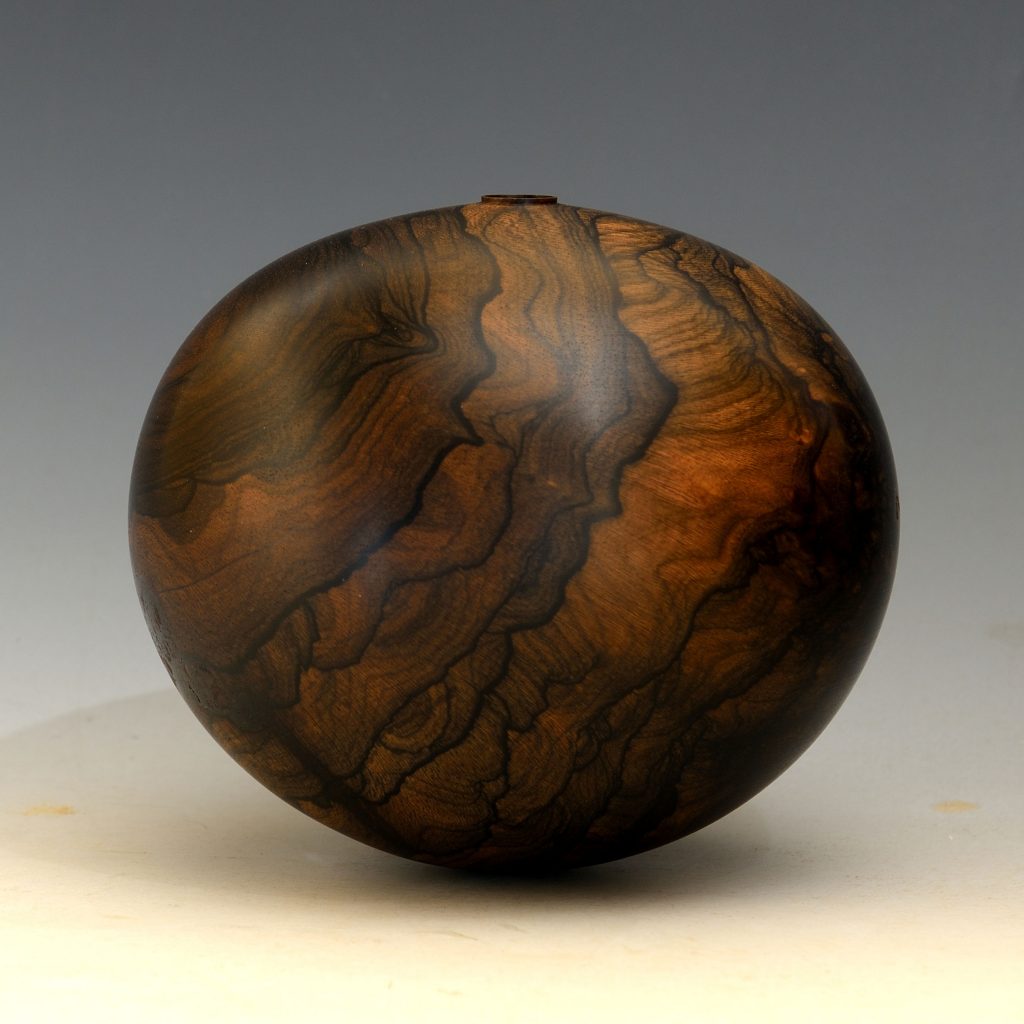
Craft Social Media Post 5 August 2020
DuMA 2nd Craft Invitational Featured Artist:
Linda Kelen
Linda Kelen is a metal artist working in Spring Green, Wisconsin.
“There’s nothing special I can say about why I do anything. It’s curiosity mostly. A wondering of, “Can I?” and “What if?”
For more info about the artist including bio & artist statement: https://dbqart.org/craft2020/artists/kelen/
DuMA 2nd Craft Invitational continues through October, 11, 2020

Craft Social Media Post 1 August 2020
Exploring The Craft Movement:
Jessie Bayes (1876-1970)
“EXPERIMENT”
In conjunction with the Craft Invitational exhibition, we invite you to explore some of the Craft movement’s figures, schools and issues.
The work of British arts and craftswoman Jessie Bayes has been described as ethereal, magical, and an “expression of things felt and seen.”
Bayes was known for her work in woodcarving, painting, calligraphy, gesso and gilding, and stained glass, but is best known for her ethereal illuminated manuscripts inspired by Scandinavian, Celtic, and French poetry. She often wrote the texts which were dominated by themes of romance and mysticism and strove to beautify everyday life and “wed the physical and spiritual.”
Jessie Bayes was raised in an artistic family where the four children were taught by their father Alfred, an etcher and book illustrator, to appreciate beauty at an early age. All her siblings later pursued careers in the fine arts.
Bayes attended evening classes at London’s Central School of Arts and Crafts, which grew directly out of the Arts and Crafts Movement of William Morris. There, Bayes learned to gild on wood and discovered a love for writing and illumination.
The art of illumination requires patience and attention to detail. Bayes, who combined tempera with watercolor and gold gilt, developed her own sense of jewel-like color, often in blues and golds. She felt that the “idea of color symbolizing love should be above all precious to an illuminator, since, in illuminating, color can reach its intensest [sic] height of purity and radiance.”
Bayes exhibited widely with the Arts & Crafts Exhibition Society, and at the Royal Academy and the Baillie Gallery in London. In 1922, Bayes exhibited some of her illuminated books, as well as paintings on vellum, fans, and panels, at the Art Center in New York. Bayes gradually expanded her repertoire to include painted and gilded decoration on furniture as well as interior design and stained-glass work.
Excerpted from the Cranbrook Kitchen Sink Weekly Blog.
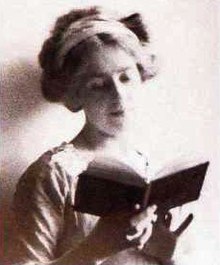
Craft Social Media Post 29 July 2020
DuMA 2nd Craft Invitational Featured Artist:
Donald Friedlich
Donald Friedlich is a glass artist working in Madison, Wisconsin.
“I had the idea for this body of work (“Organic Series”) for more than five years, but thought it was frivolous, so kept pushing it aside. Eventually, though, the only way to get it to stop haunting me was to make a piece of jewelry and see it if it was worthy of pursuit. In the end, I came to feel that transforming commonplace materials such as food, into glass, allowed viewers and wearers to see the beauty and elegance of their forms in a new light. Plus, the idea of wearing an apple or a stalk of celery as a brooch makes me smile.”
For more info about the artist including bio & artist statement:
https://dbqart.org/craft2020/artists/friedlich/
DuMA 2nd Craft Invitational continues through October, 11, 2020
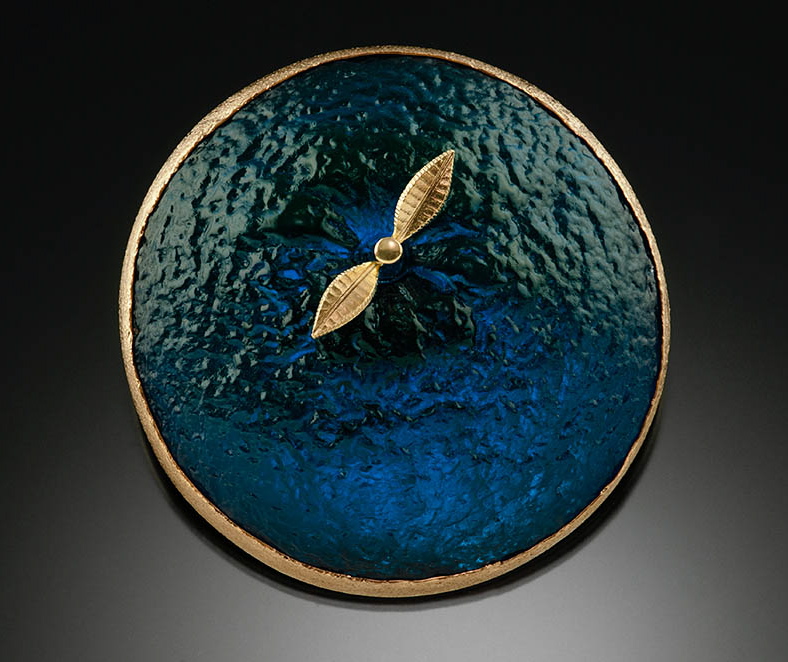
Craft Social Media Post 22 July 2020
DuMA 2nd Craft Invitational Featured Artists:
Kristin Garnant and v. skip willits are metal artists working in Comanche, Iowa.
“The distinct quality of steel and the combinations of textures reveal unique compositions much like the layering of fine handmade papers. Reinterpreting ideas in metal can turn the most ordinary form on its head and give it a distinctly new identity.”
-Kristin Garnant
The things that I make are integral parts of who I am.”
– v. skip willits
For more info about the artists including bio & artist statement: https://dbqart.org/craft2020/artists/garnantwillits/
DuMA 2nd Craft Invitational continues through October, 11, 2020

Craft Social Media Post 25 July 2020
Exploring The Craft Movement
Gustav Stickley (1858-1942)
“TRANSFORM”
In conjunction with the Craft Invitational exhibition, we invite you to explore some of the Craft movement’s figures, schools and issues.
Gustav Stickley was an American furniture designer and maker. He was the dominant voice of the American Craftsman movement and created what came to be known as the Mission style.
Stickley was born in Osceola, Wisconsin, a child of first-generation German immigrants. His formal education ended with his parent’s separation and he began training as a stonemason, helping to support his large family. He moved with his mother and siblings to Brandt, Pennsylvania about 1875, where worked at and later managed an uncle’s chair factory.
In 1883 he and his brothers Albert and Charles founded the Stickley Brothers Company in Susquehanna, Pennsylvania. A year later the business relocated to Binghamton, New York. By 1898 Stickley owned his own furniture business, The Gustave Stickley Company, in a suburb of Syracuse, New York.
Stickley traveled to Europe for the first time in 1895, They he was exposed to products of the English Arts and Crafts movement and the French Art Nouveau. A second trip a year later provided a spiritual awakening. The Arts and Crafts movement in Europe promoted well built, hand crafted, honest work. The movement was a reaction to the poor treatment of workers in the urban factories. Stickley embraced these ideas and sought to replicate its concepts in his furniture business.
Working with architect and designer Henry Wilkinson and, later, designer LaMont A. Warner, he created his first Arts and Crafts works in an experimental line called the “New Furniture” and, after exhibiting the designs in the Grand Rapids trade show in July 1900, he arranged for the Tobey Furniture Company of Chicago to distribute the line. These designs were a radical departure from the ornate furniture of the Victorian era. They reflected the Arts and Crafts ideals of simplicity, honesty in construction, and truth to materials. Unadorned, plain surfaces were enlivening by the careful application of stain so as not to obscure the grain of the wood. The mortise and tenon joinery were exposed to emphasize the structural qualities of the works. Hammered metal hardware, in armor-bright polished iron or patinated copper, emphasized the handmade qualities of furniture which was fabricated using both hand-working techniques and modern woodworking machinery.
At the very end of 1900, Stickley began offering middle class consumers a host of progressive furniture designs in ammonia-fumed quarter-sawn white oak.
Later that year he launched The Craftsman magazine, with Syracuse University professor Irene Sargent as editor. Sargent initially focused on the early work of William Morris and John Ruskin in England. As the magazine matured it broadened its coverage to include homes and home crafts, literature and music, architecture, city planning, social conditions and progressive political issues.
The Craftsman became the “Bible” for promoting the Arts and Crafts philosophy, as well as advertising a range of products of interest to the homemaker. It encouraged readers to escape their busy lives and dream of simpler times and a better world, to find pleasure in manual tasks like gardening and the creation of handcrafted work.
Stickley was an early and strong supporter of conservation issues. He also supported the Women’s movement as well as ideas involving fair treatment of employees.
Stickley began publishing house designs by various architects in 1902. His architectural ideas were delineated by his talented employees, most notably Harvey Ellis, who worked with Stickley through the latter half of 1903.
Subscribers to Stickley’s “Home Builders Club” were eligible to receive a free set of house plans on homes that would be designed and published each month in the magazine. By the time The Craftsman ended publication in 1916, there were more than 222 different home plans available to Stickley’s subscribers, and his “Architectural Department” would modify an existing design or create new homes on commission. Designs included the farmhouse, four-square, town house, cottage, and the bungalow, types familiar to the American public.
Homes were constructed in harmony with its landscape, using natural materials. Soft earth-toned colors predominated, and interiors included simplified moldings, stained wood, and features such as built-in cabinets and fireplaces with inglenooks for seating.
Stickley changed the name of his company The Craftsman Workshops in 1903 and marketed his product with the brand name “Craftsman,”. Ultimately over 100 retailers across the United States represented the brand. Three years later he moved his magazine, architectural department, marketing and sales operations to New York City.
In 1908, he began to purchase tracts of farmland in near Morris Plains, NJ. That would become known as Craftsman Farms. Despite being a nationally known tastemaker, with products known world-wide, and a highly competitive magazine circulation, Stickley sadly overreached.
Stickley leased an excessively expensive 12-story headquarters building in mid-town Manhattan — the Craftsman Building — beginning in 1913, only a year before the outbreak of World War I, just as his company began to operate at a loss, and just as interest in the Arts and Crafts movement was beginning to wane.
In 1915 Stickley filed for bankruptcy, owing nearly a quarter of a million dollars, The Craftsman ceased publication by the end of 1916, and he was forced to sell Craftsman Farms in 1917 to stave off foreclosure.
Stickley moved back to Syracuse where he lived until his death in 1942.
Known today as the creator of Craftsman furniture, Stickley was also a visionary spokesman and proponent for the Arts and Crafts philosophy. Today, the Stickley name is associated with the distinctive clean and simple style of mission furniture, also known as Craftsman style. Original Stickley furniture pieces are expensive and sought after.

Craft Social Media Post 29 June 2020
In conjunction with the Craft Invitational exhibition, we invite you to explore some of the Craft movement’s leading figures and schools.
William Morris (1834-1896) “INSPIRE”
British textile designer, craftsman, writer and political activist William Morris was a key figure in the Arts & Crafts Movement.
Morris was born in affluence in Walthamstow, London, in 1834. His broker father bestowed an inheritance so large that Morris was never troubled about earning an income.
From his youth, Morris had a strong moral compass and social awareness. He was disgusted by the industrialism of the Victorian age, believing society based on mass production created alienation and division.
Matriculating at Oxford University Morris met the Pre-Raphaelite artist Edward Burne-Jones, who shared his views about the decline of the modern world. Burne-Jones introduced him to a group who were known as ‘The Set’ or ‘The Brotherhood’. Together they read medieval history, chronicles, and poetry, which celebrated themes of romantic chivalry and self-sacrifice. As a result, Morris developed a lifelong love of medieval history and art.
Combined with his hatred of modern industrialization, Morris sought to return to a medieval system that supported craft through artisan guilds, thereby raising the status of the artist or manufacturer. His vision was out of sync with Victorian Britain, where the status of the individual maker had been relegated to just another cog in a machine.
Morris’s ideas were influenced by art and social critic John Ruskin, who cautioned about the dehumanizing consequences of mass production. Industrialization, Ruskin believed, would eventually be the ruin of art and culture, and by this logic, it would lead to a destruction of civilization.
The Arts and Crafts movement drew upon several key principles which sprang from a fundamental respect for nature. Morris believed that the beauty of objects lay in both the visual aesthetic and the skill of the craftsperson.
The principles specified that only natural and local materials should be used, vernacular styles should be created from domestic, traditional techniques, simple forms should expose the construction processes, extravagant decoration was unnecessary, and natural motifs was the preferred theme.
Morris’ ideas manifested in Red House, a family home designed by Phillip Webb in Kent. The design aimed to be true to its materials and expressive of the site and local culture. When another re-Raphaelite artist Gabriel Dante Rossetti saw it for the first time, he declared it ‘more a poem than a house’. Expansive murals and hand-embroidered fabrics adorned the walls, creating a sense of an ancient manor house.
In 1861, Morris founded the Morris, Marshall, Faulkner & Co decorative arts firm with Burne-Jones, Rossetti and Webb. They brought together craftsmen of all kinds under one studio and sought to apply Ruskin’s philosophy to business. For Morris, this creating beautiful designs which were also functional. He wrote, ‘Have nothing in your houses that you do not know to be useful or believe to be beautiful.
’The medieval style of Morris’s work was well received. His approach to craftsmanship and labor became a model for numerous craft guilds and art societies.
In 1875, Morris & Company was founded as Morris took control of the company. It sold printed and woven fabrics, wallpapers, designs for carpets, rugs, embroidery and tapestry and offered an innovative ‘all under one roof’ retail experience.
Despite his privileged background, Morris became increasingly frustrated with politics, and founded the Socialist League in 1884. When Morris died in 1896, he was a household name, and his design principles still enjoy popular success today.
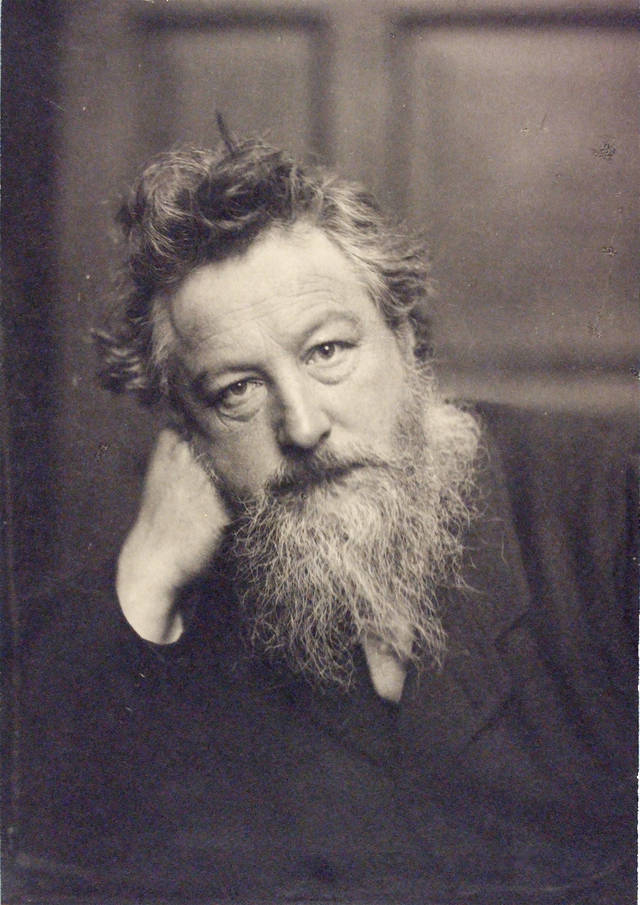
Craft Social Media Post 13 July 2020
DuMA 2nd Craft Invitational Featured Artist:
Ernest Miller a ceramic artist working in Minneapolis, MN
His pottery is inspired by the architecture and machinery found in the rural Midwestern landscape. Weathered paint and surface deterioration reveal a warmth earned through time and use presenting a record of their past.
For more info about Miller including bio & artist statement: https://dbqart.org/craft2020/artists/miller/
DuMA 2nd Craft Invitational continues through October, 11, 2020
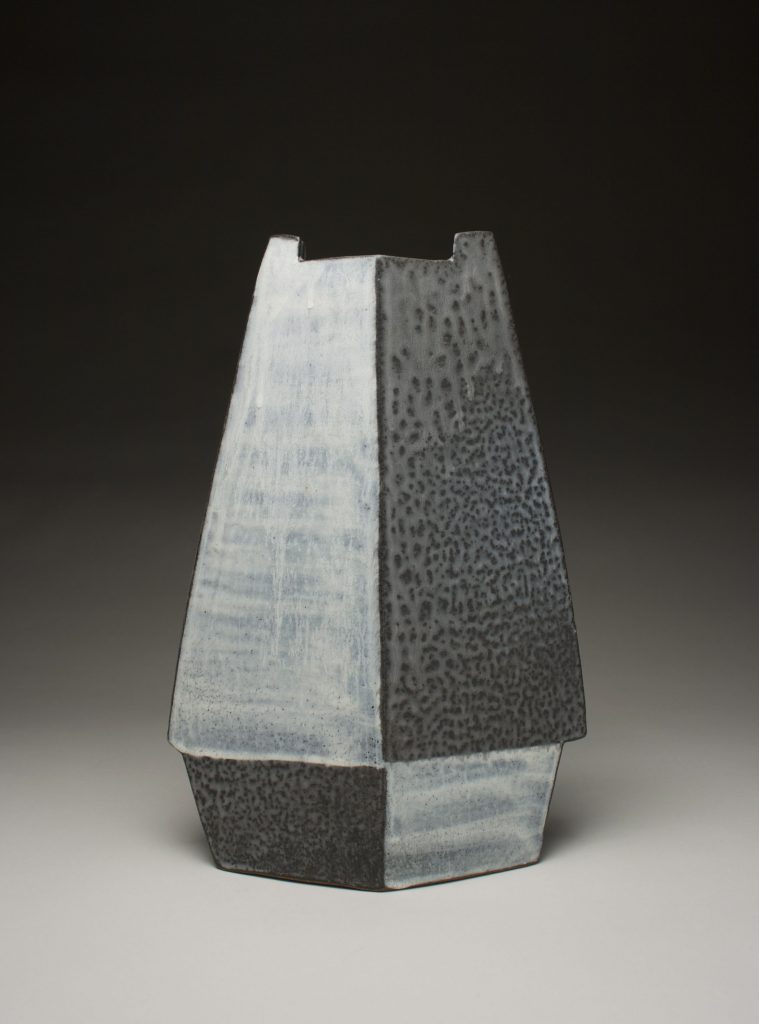
Craft Social Media Post 19 July 2020
In conjunction with the Craft Invitational exhibition, we invite you to explore some of the Craft movement’s figures, schools, and ideas.
Newcomb Pottery “EXPERIMENT”
Newcomb Pottery was a brand of American Arts & Crafts pottery produced from 1895 to 1940. It grew out of the pottery program at H. Sophie Newcomb Memorial College, the women’s college now associated with Tulane University in New Orleans, Louisiana. The Pottery was a contemporary of Rookwood, Teco and Grueby pottery.
In 1884 Tulane University hired William Woodward to start an art program at the school. That same year, the Cotton Exposition world’s fair was taking place across the street in Audubon Park. Inspired by exhibits at the fair, Woodward organized the Tulane Decorative Art League, teaching evening classes in pottery, carving, drawing, painting, and needlework. From this league, the New Orleans Art Pottery Club was formed.
In 1886, through the bequest of Josephine Louise Newcomb in memory of her daughter Sophie, Newcomb College opened as the very first coordinate college for women. William Woodward’s brother Ellsworth took over the art program at Newcomb. Inspired by the arts and crafts movement in England and the pottery factories of Europe, the Woodward brothers founded the Newcomb Pottery enterprise, which began production in 1894.
In 1895, a year after the Newcomb Pottery enterprise was founded, the Newcomb potters developed their style. All pieces were thrown and decorated by hand, with no two being alike. Each piece was required to be functional, but the primary purpose of the pottery was to be decorative. The vessels were made from local clays and their subject matter reflected the local landscape. At the time, because it was not considered ladylike to sit at a potter’s wheel, male potters employed at the Pottery threw the vessels, while the women were responsible for choosing the shapes and applying the decoration and glazes. From 1895 to 1902 Newcomb Pottery pieces reflected the arts and crafts era in which the Pottery was operating. The pottery often depicted Louisiana’s local flora, done in blue, yellow and green high glazes. After 1902 incising was developed as a design technique, giving the pieces an expressive and graphic quality.
As Newcomb pottery was becoming commercially popular and being sold across America, it was also being recognized for its craftsmanship. The Pottery won awards at several world expositions, including the bronze medal at the Exposition Universalle in Paris and three gold medals at the Jamestown Tercentennial in Virginia.
Newcomb Pottery experimented with some Art Deco styles from 1924-1929. Unfortunately, the designs were not well received. The Pottery survived the Great Depression, but by 1935 most of its original faculty and founders had retired or died. The new leadership at Newcomb decided to shift focus away from production and towards focusing strictly on education. They closed the Newcomb Pottery enterprise in 1939.
The Smithsonian Institution featured a traveling exhibition of Newcomb College Pottery from 2013 to 2016. The exhibition visited various cities around the United States, and displayed approximately 180 objects from the Newcomb College Pottery program, along with metalwork, jewelry, textiles and other objects made during the period the Newcomb Pottery was in operation.
Excerpted from the Newcomb Museum of Art.
